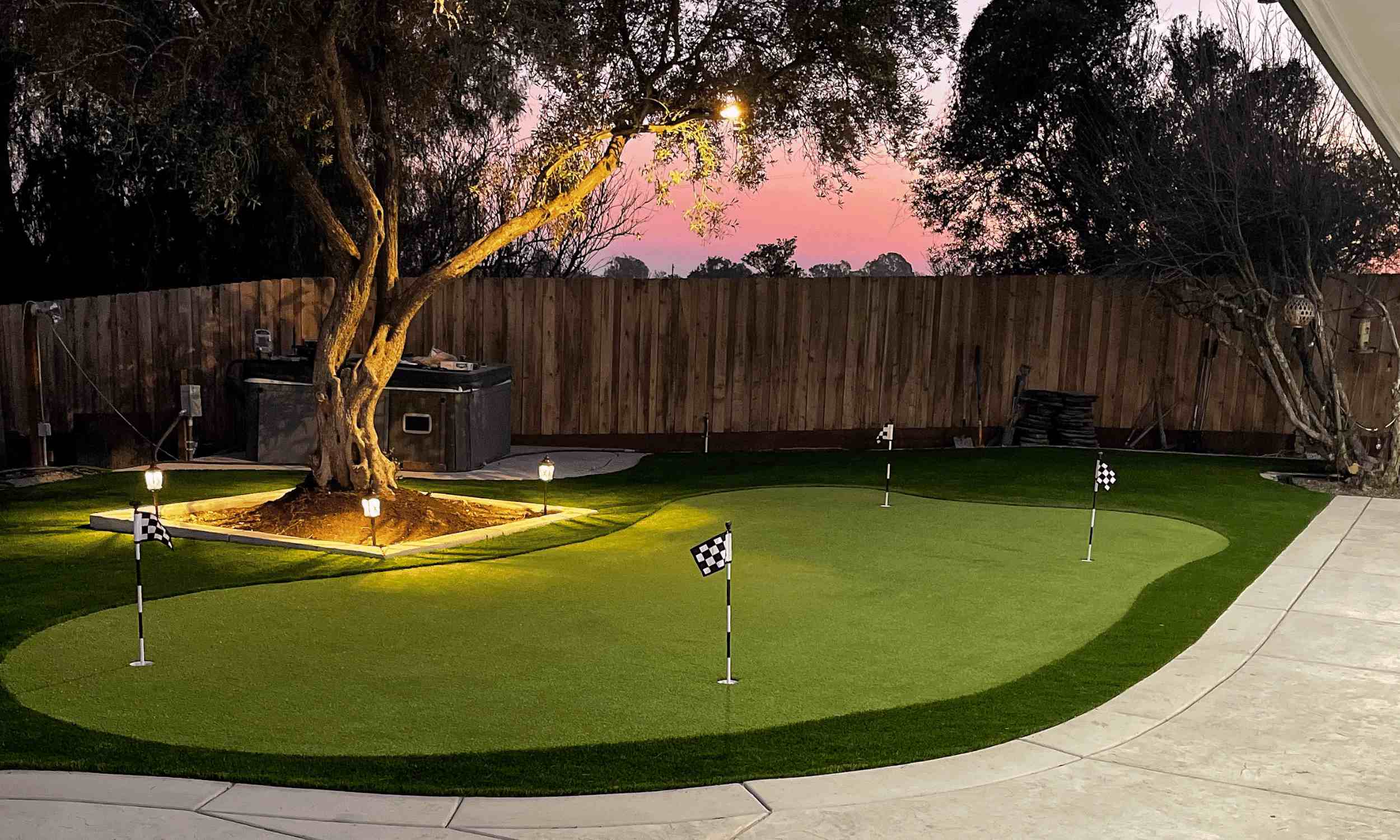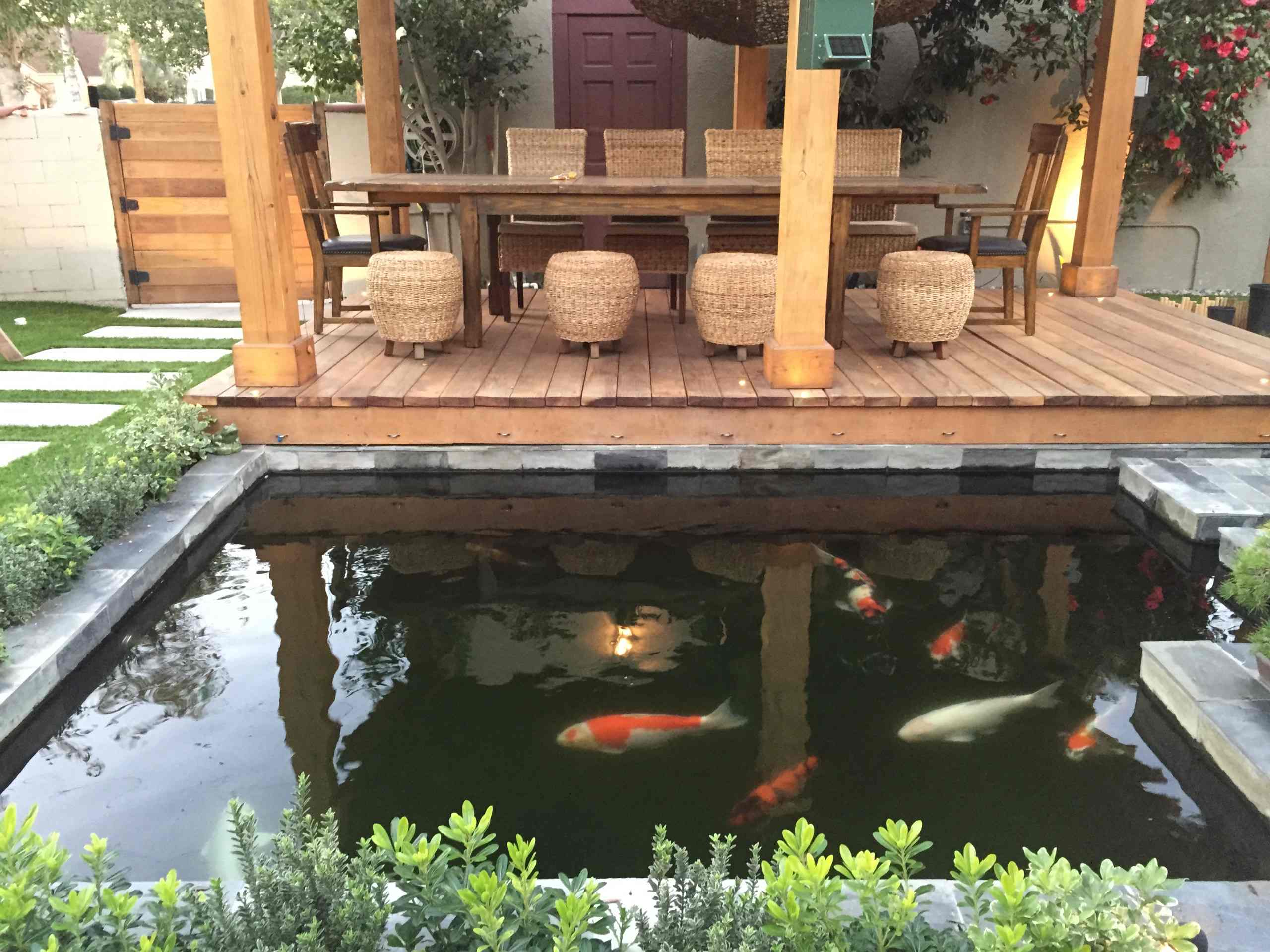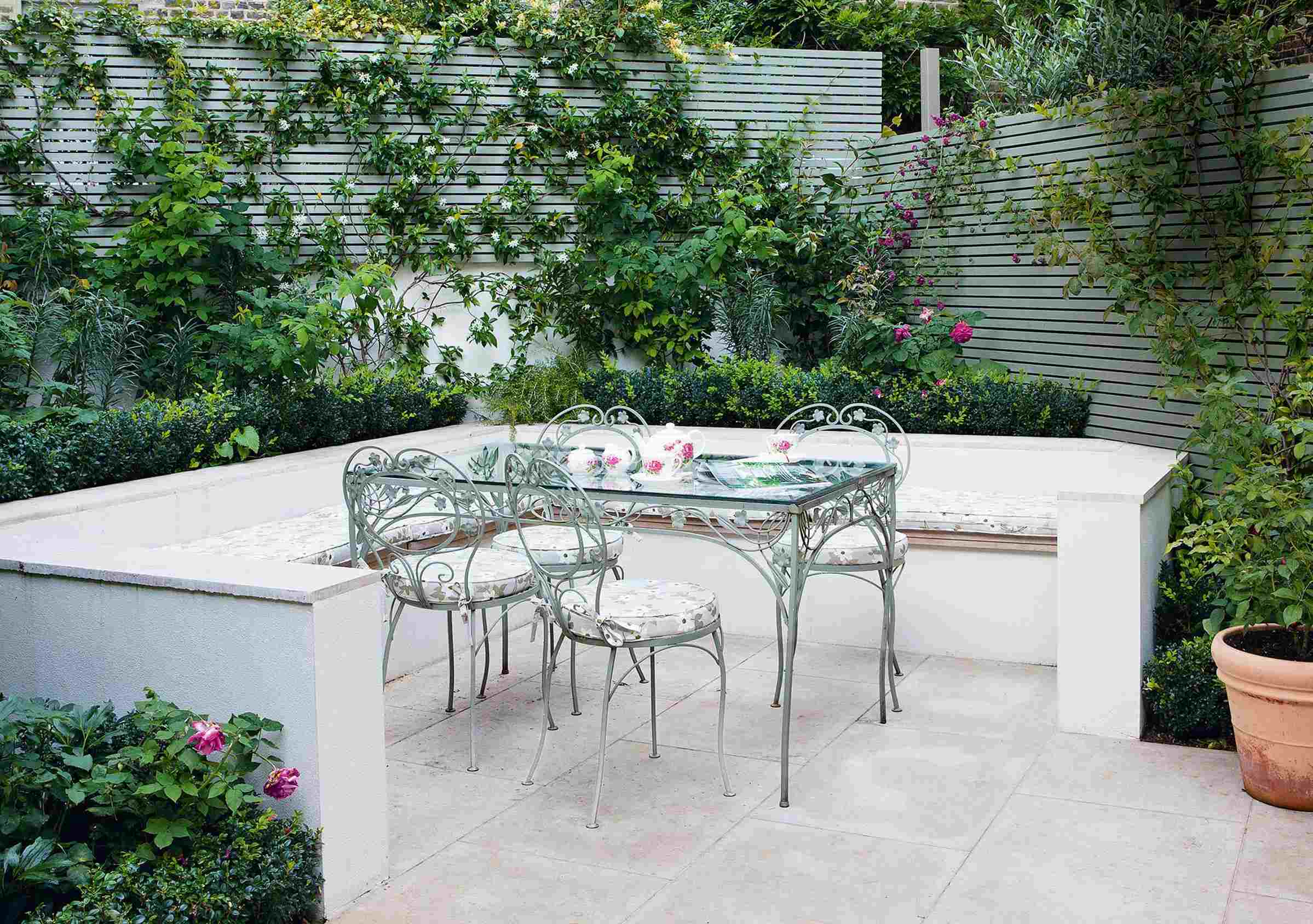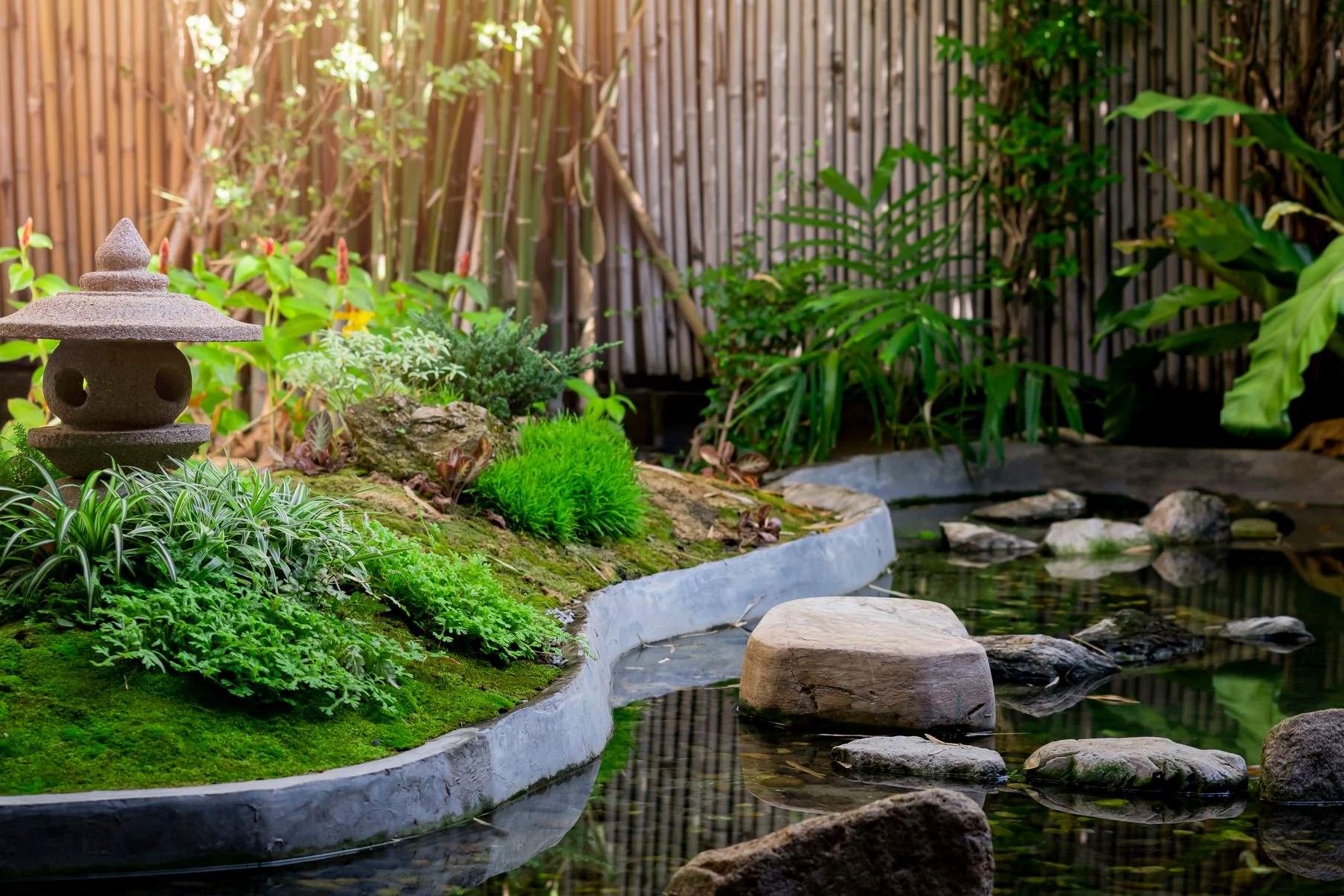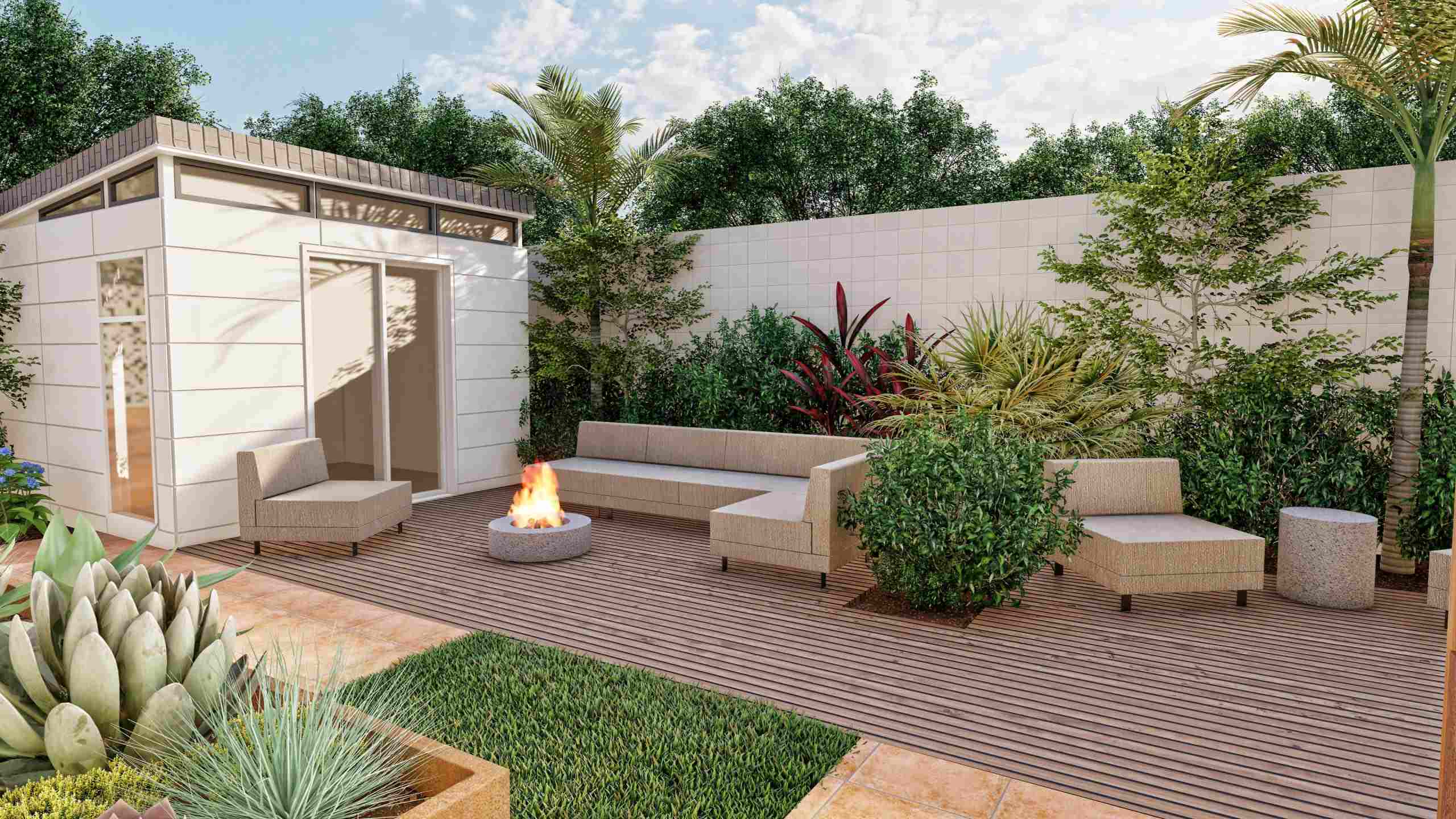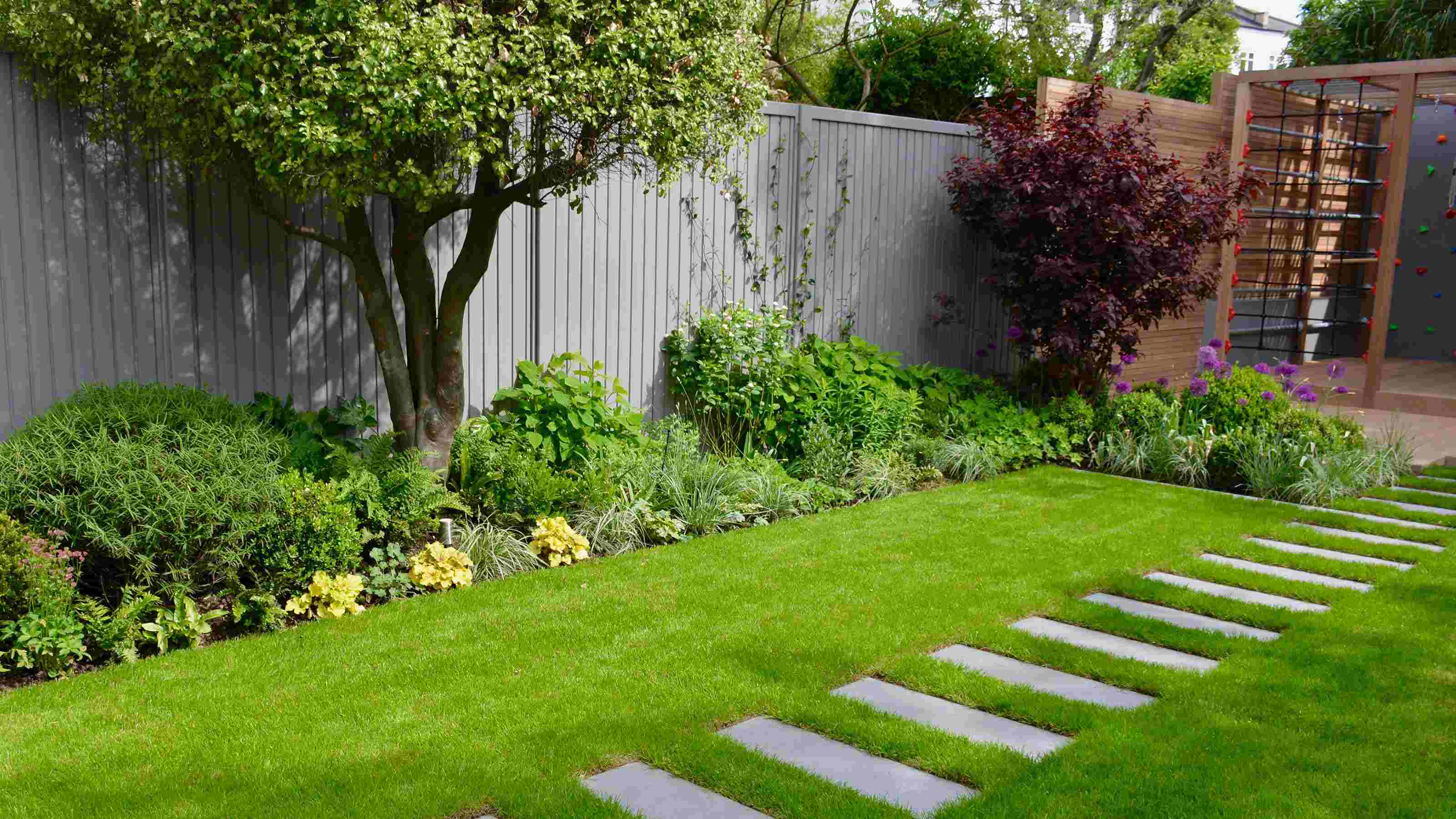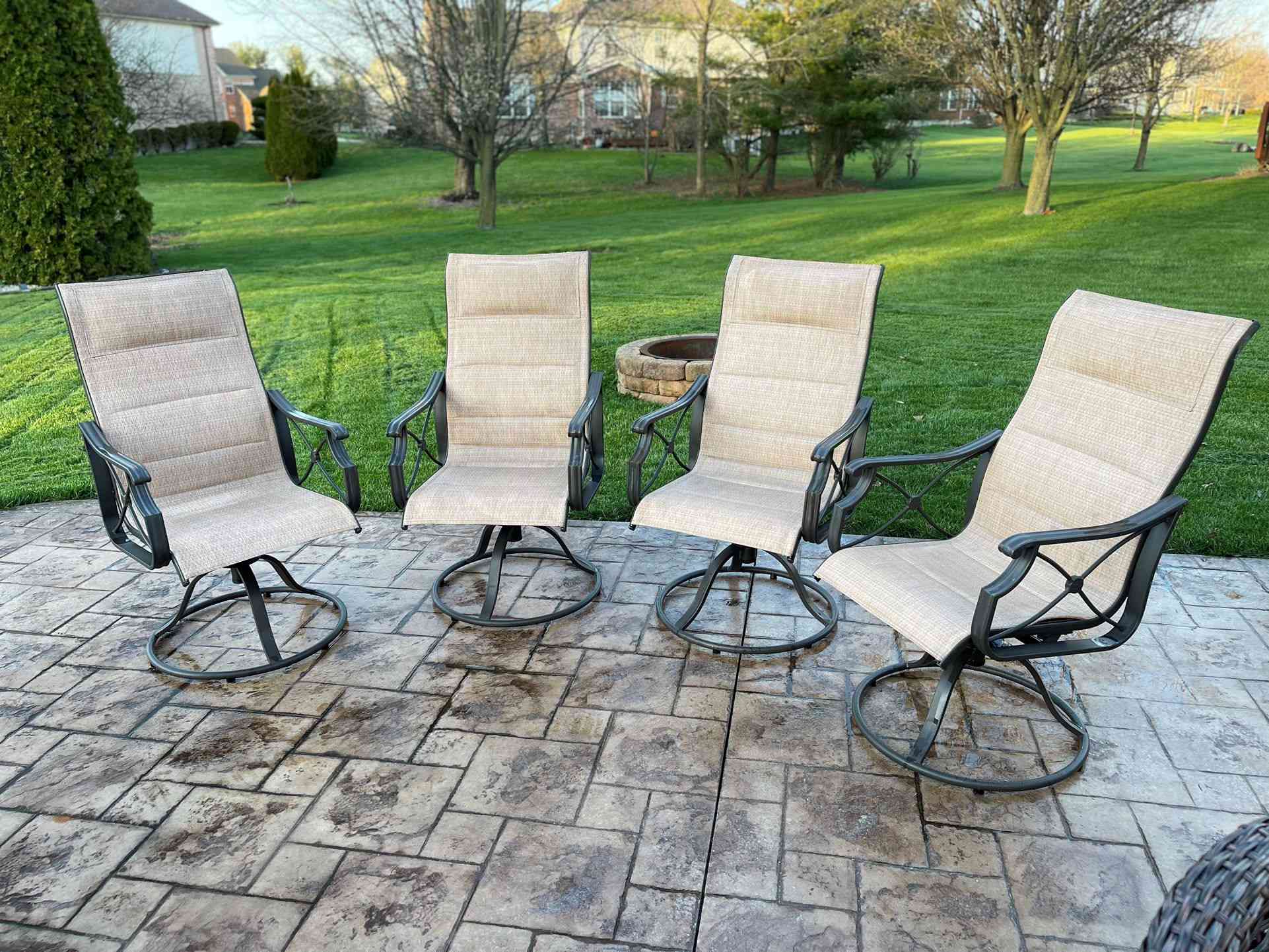Home>Garden Design>How To Make A Backyard Oasis
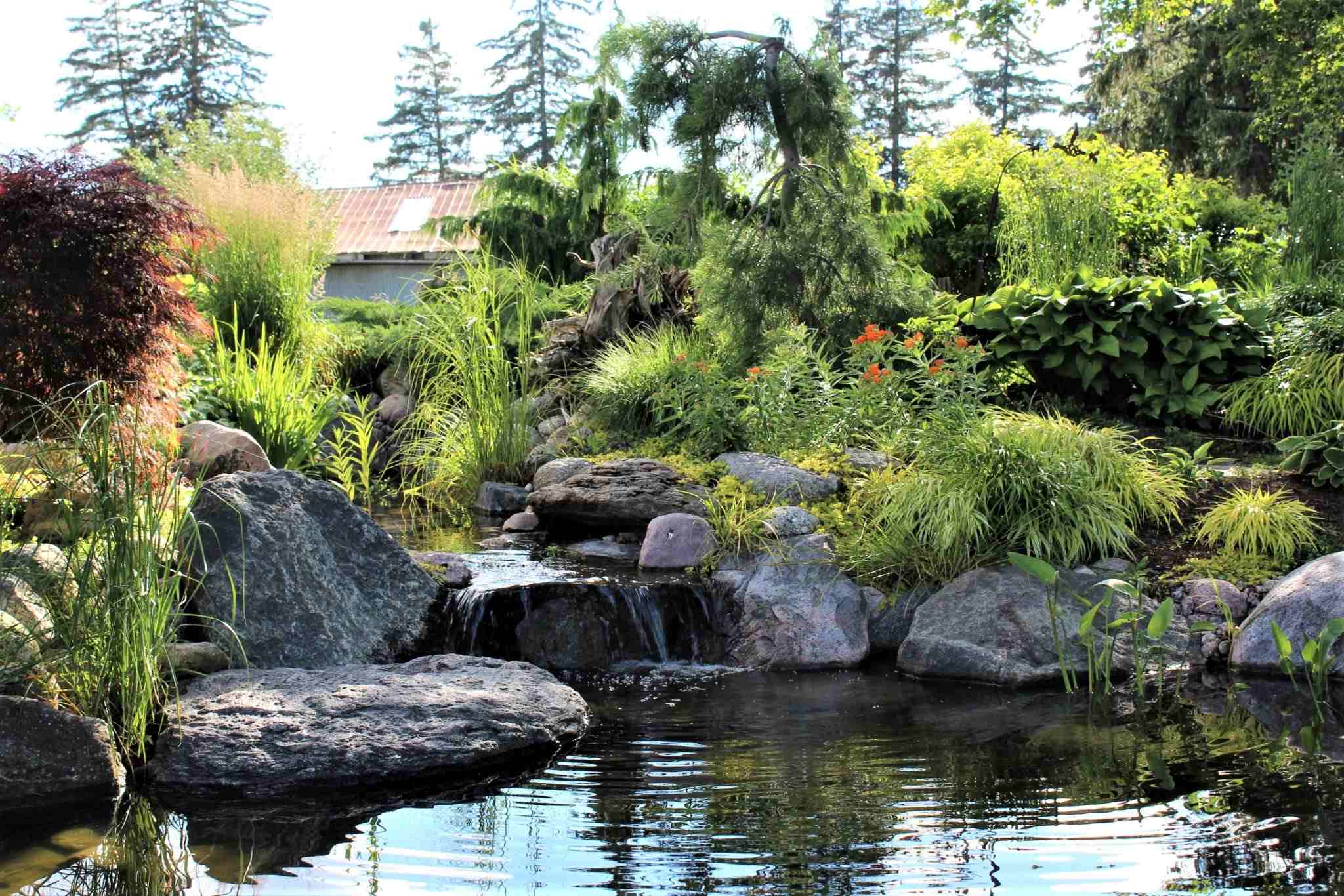

Garden Design
How To Make A Backyard Oasis
Modified: January 22, 2024
Create your own tranquil backyard oasis with our expert landscape design tips and ideas. Turn your outdoor space into a relaxing retreat with our step-by-step guide.
(Many of the links in this article redirect to a specific reviewed product. Your purchase of these products through affiliate links helps to generate commission for Chicagolandgardening.com, at no extra cost. Learn more)
Table of Contents
- Introduction
- Choosing the Location
- Designing the Layout
- Creating a Relaxing Atmosphere
- Planting Trees and Shrubs
- Installing a Water Feature
- Building a Patio or Deck
- Adding Outdoor Furniture
- Incorporating Lighting
- Including a Fire Pit or Fireplace
- Creating Privacy Screens
- Maintaining Your Backyard Oasis
- Conclusion
Introduction
Welcome to the ultimate guide on how to create a breathtaking backyard oasis. Your backyard is more than just a patch of grass – it has the potential to become a serene sanctuary where you can escape from the hustle and bustle of everyday life. With a little planning and creativity, you can transform your outdoor space into a tranquil retreat that will leave you feeling refreshed and rejuvenated.
Imagine stepping outside to the sound of gently trickling water, surrounded by lush greenery and the fragrance of blooming flowers. Picture yourself relaxing on a comfortable lounge chair, basking in the warm glow of soft lighting as the sun sets. Creating a backyard oasis is not only about enhancing the aesthetic appeal of your outdoor space, but also about creating a serene atmosphere that promotes relaxation and tranquility.
In this comprehensive guide, we will walk you through every step of the process, from choosing the perfect location to maintaining your backyard oasis. Whether you have a small backyard or a sprawling garden, there are design concepts and landscaping techniques that can be applied to create a peaceful haven that reflects your personal style and taste.
So, grab a pen and paper, put on your thinking cap, and let’s dive into the world of landscape design as we embark on the journey to transform your backyard into an oasis of serenity.
Choosing the Location
When it comes to creating a backyard oasis, one of the most important factors to consider is the location. The right location can make all the difference in setting the tone and atmosphere of your outdoor space. Here are some key considerations to keep in mind when choosing the perfect spot for your backyard oasis:
- Sunlight: Take note of how the sunlight falls on different areas of your backyard throughout the day. Consider the ideal balance of sun and shade for your oasis. If you enjoy basking in the sun, choose an area that receives ample sunlight. On the other hand, if you prefer a cooler and more shaded retreat, opt for a spot with more natural shade from trees or buildings.
- Views and Privacy: Consider the views from your backyard and the level of privacy you desire. If you have a scenic landscape or a beautiful garden, choose a location that allows you to take full advantage of those views. Additionally, think about how exposed your backyard is to neighbors or passersby. If privacy is important to you, select an area that can be shielded with fences, hedges, or strategic positioning.
- Accessibility: Think about how easily accessible the chosen location is from your home. Ideally, it should be a seamless transition from indoors to outdoors. If you plan on entertaining guests frequently, consider a location that allows easy access to your kitchen or dining area. You may also want to ensure there is a clear pathway from your backdoor to the oasis area.
- Functionality: Reflect on how you plan to use your backyard oasis. Are you looking to create a space for relaxation, outdoor dining, or entertaining? Based on your intended purpose, choose a location that offers the necessary space and amenities for your activities. For example, if you enjoy gardening, consider a spot that receives sufficient sunlight and is close to a water source.
By carefully considering these factors, you can choose a location that complements your lifestyle and meets your specific needs. Remember, the location forms the foundation of your backyard oasis, so take your time to explore various options before making a decision.
Designing the Layout
Once you have chosen the perfect location for your backyard oasis, it’s time to start designing the layout. The layout will determine the flow and functionality of your outdoor space, so careful planning is essential. Here are some key considerations to help you create a well-designed and harmonious oasis:
- Zoning: Divide your outdoor space into different zones based on their function. For example, you may have a relaxation area with lounge chairs, a dining area with a table and chairs, and a fire pit area for gathering. This zoning allows for easy navigation and creates a sense of organization.
- Pathways: Consider incorporating pathways to connect different areas of your backyard oasis. These pathways can be made of stone, gravel, or even mulch, depending on your preferred aesthetic. Well-designed pathways not only add functionality but also create visual interest and guide the flow of movement.
- Focal Points: Choose focal points that draw the eye and create a sense of visual interest. This could be a striking water feature, a beautiful sculpture, or a vibrant flower bed. Focal points add depth and character to your outdoor space, enhancing the overall ambiance.
- Balance and Symmetry: Aim for a balance between different elements and a sense of symmetry in your layout. This creates a harmonious and visually pleasing environment. For example, if you have a large tree on one side of your backyard, balance it by creating a seating area or planting beds on the opposite side.
- Integration with Nature: Incorporate the natural elements of your surroundings into your design. Consider the existing trees, flowers, and terrain, and work with them to enhance the overall aesthetics. This creates a seamless transition between your outdoor space and the surrounding environment.
Before finalizing your layout, it’s a good idea to create a scaled drawing or use landscaping software to visualize the design. This will help you determine the placement of different features and ensure that everything fits harmoniously within the space.
Remember, your backyard oasis should reflect your personal style and taste, so don’t be afraid to infuse creativity and individuality into the design. Experiment with different layouts until you find the one that resonates with you and creates the atmosphere you desire.
Creating a Relaxing Atmosphere
To truly transform your backyard into an oasis, it is important to create a relaxing atmosphere that promotes rest and rejuvenation. Here are some key elements to consider when cultivating a serene environment:
- Natural Elements: Incorporate natural elements such as plants, flowers, and water features to create a tranquil ambience. Choose plants that are known for their calming properties, such as lavender or jasmine, and arrange them strategically to create a sense of serenity and privacy. The sound of running water from a fountain or waterfall can also contribute to a soothing atmosphere.
- Color Palette: Opt for a calming color palette that evokes relaxation. Shades of green, blue, and neutral tones work well in creating a peaceful and serene environment. Consider using these colors for outdoor furniture, cushions, and accessories to maintain a cohesive and harmonious aesthetic.
- Comfortable Seating: Invest in comfortable seating options that invite relaxation. Whether it is a cozy lounge chair, a hammock, or a swing, having a comfortable place to sit and unwind is essential. Add plush cushions and throws to provide extra comfort and a touch of luxury.
- Soothing Lighting: Illuminate your backyard oasis with soft and warm lighting to create a serene atmosphere during the evening hours. Choose outdoor lights that emit a gentle glow, such as string lights, lanterns, or pathway lights. Consider using dimmers to adjust the brightness according to your desired mood.
- Soundscapes: Enhance the calming atmosphere by incorporating soothing sounds. Install outdoor speakers to play relaxing music or the sounds of nature. Wind chimes or a mini Zen garden with a sand rake can also add a meditative touch.
- Privacy: Create a sense of privacy to ensure a peaceful and intimate environment. Install tall hedges, trellises, or pergolas that offer both visual and physical separation from the outside world. Consider using outdoor curtains or retractable screens to further enhance privacy when needed.
- Scents and Aromas: Engage your senses by introducing pleasant scents and aromas into your backyard oasis. Plant fragrant flowers and herbs, such as roses or lavender, to release their natural fragrance into the air. You can also incorporate scented candles or essential oil diffusers to add a soothing aroma.
By incorporating these elements into your backyard oasis, you can create a peaceful and inviting atmosphere that encourages relaxation and rejuvenation. Take the time to carefully curate each component to ensure that your outdoor space truly becomes a sanctuary of calmness.
Planting Trees and Shrubs
One of the key elements in creating a lush and vibrant backyard oasis is the strategic planting of trees and shrubs. Not only do they provide shade and privacy, but they also add texture, color, and a sense of tranquility to your outdoor space. Here are some tips to consider when planting trees and shrubs:
- Choose the Right Species: Select trees and shrubs that thrive in your climate and are well-suited for your specific backyard conditions. Consider factors such as sunlight exposure, soil type, and water requirements. Research the growth habits, mature size, and seasonal characteristics of each plant to ensure they complement your overall design.
- Create a Balanced Landscape: Aim for a balanced combination of evergreen and deciduous trees, as well as a mix of flowering and non-flowering shrubs. This will ensure that your backyard oasis looks visually appealing throughout the year. Consider the different heights, shapes, and textures of the plants to create a diverse and interesting landscape.
- Establish Layers and Visual Interest: Plant taller trees towards the back of your backyard to serve as a backdrop and provide shade. Then, layer shorter trees and shrubs towards the front to create depth and visual interest. Use shrubs to define pathways or create borders, and intersperse flowering plants to add bursts of color.
- Consider Indigenous Plants: Incorporate native plants into your landscape design, as they are adapted to the local climate and require less maintenance. Indigenous plants also provide food and habitat for local wildlife, contributing to a thriving ecosystem in your backyard.
- Plan for Growth: Take into account the eventual size of trees and shrubs, and ensure that you provide enough space for them to grow without overcrowding other plants or structures. Consider the potential impact on neighboring properties, such as shading or invading root systems, and plan accordingly.
- Maintain Proper Care: Implement a regular maintenance routine for your trees and shrubs, including watering, pruning, and fertilizing as necessary. Pay attention to their specific needs and monitor for any signs of pests or diseases. Proper care will ensure the health and vitality of your plants, enhancing the beauty and longevity of your backyard oasis.
When planting trees and shrubs, it’s important to have a vision for how they will enhance your overall landscape design. Take into consideration the size, shape, color, and seasonal changes of these plants to create a stunning backdrop for your backyard oasis. With the right selection and care, trees and shrubs will add a natural charm and tranquility to your outdoor space for years to come.
Installing a Water Feature
A water feature can be a mesmerizing addition to your backyard oasis, bringing a sense of serenity and tranquility. The soothing sound of flowing water adds an element of calmness, while the visual appeal of a water feature creates a focal point and enhances the overall ambiance. Here are some considerations when installing a water feature:
- Type of Water Feature: There are various types of water features to choose from, depending on your preference, space, and budget. Some popular options include fountains, ponds, streams, cascades, and waterfalls. Determine the size and style that best fits your backyard oasis and complements your overall design.
- Location and Scale: Select an appropriate location for your water feature, considering factors such as sunlight exposure, visibility from different points in the yard, and accessibility for maintenance. Consider the scale of the water feature in relation to the size of your outdoor space – you don’t want it to overpower or feel out of place.
- Professional Installation: While some water features can be installed as DIY projects, others may require professional assistance for proper installation and connection to a water source and electrical supply. Hiring a professional ensures that the water feature is securely installed, functions correctly, and meets any necessary safety requirements.
- Material and Design: Choose the appropriate materials that complement the overall aesthetics of your backyard oasis. Options include natural stone, concrete, ceramic, or even eco-friendly materials. Consider the design of the water feature – whether you prefer a modern, minimalist look or a more rustic and natural appearance.
- Maintenance and Circulation: Regular maintenance is essential to keep your water feature in optimal condition. This may include cleaning debris, checking and adjusting water levels, and maintaining pumps, filters, and lighting. Consider incorporating a circulation system to keep the water moving, which reduces the chances of stagnation and potential mosquito breeding.
- Complementary Elements: Enhance the visual appeal of your water feature by incorporating complementary elements. Surround the feature with attractive landscaping, such as rocks, stones, or plants. Consider adding underwater lighting or surrounding it with seating to create a captivating and inviting space.
Installing a water feature requires careful planning and consideration. It is important to choose the right type, size, and location that aligns with your design vision. A well-designed water feature can elevate your backyard oasis, creating a calming and refreshing space where you can unwind and find solace in the soothing sounds of water.
Building a Patio or Deck
A patio or deck is an essential element in creating a functional and inviting backyard oasis. It provides a designated space for outdoor seating, dining, and entertaining. Whether you choose a patio or a deck, here are some important considerations to keep in mind when building this foundational feature:
- Materials: Select the right materials for your patio or deck based on your budget, style preference, and maintenance requirements. Popular options include wood, composite materials, concrete, and natural stone. Each material has its own unique characteristics, so consider factors such as durability, slip resistance, and how well it complements the overall aesthetic of your backyard.
- Size and Layout: Determine the appropriate size and layout for your patio or deck based on your specific needs and the available space in your backyard. Consider how you plan to use the area – whether it’s for hosting large gatherings, intimate dinners, or simply lounging and relaxing. Ensure there is enough space for furniture, traffic flow, and any additional features you want to incorporate.
- Building Codes and Permits: Check with your local building authority to determine if there are any building codes or permits required for constructing a patio or deck in your area. Make sure to obtain the necessary permits and adhere to the regulations to avoid any legal issues down the line.
- Integration with Landscape: Ensure that your patio or deck integrates seamlessly with the surrounding landscape. Consider factors such as the elevation and slope of your backyard, existing trees or plants that you want to preserve, and how the patio or deck will blend with the overall design of your outdoor space.
- Access and Pathways: Plan the access points and pathways to and from your patio or deck. Ensure that there are convenient and safe routes connecting it to the house, as well as other areas of your backyard oasis. Consider adding steps, ramps, or lighting to enhance accessibility and improve the overall functionality of the space.
- Outdoor amenities: Think about any additional amenities or features you want to incorporate into your patio or deck design. This could include a built-in barbecue, an outdoor kitchen, a fire pit, or even a hot tub. Incorporating these elements at the initial construction stage will ensure they are seamlessly integrated into the design.
- Maintenance and Durability: Consider the long-term maintenance and durability of the materials used in your patio or deck. Choose materials that are resistant to rot, decay, and insect damage. Regular cleaning, sealing, and refinishing may be required to keep your outdoor space looking its best.
Building a patio or deck requires careful planning and attention to detail. It is important to consider various factors such as materials, size, layout, and integration with the landscape to create a functional and aesthetically pleasing outdoor space. With proper construction, your patio or deck will become the central hub of your backyard oasis, providing a space for relaxation, entertainment, and creating lasting memories.
Adding Outdoor Furniture
Outdoor furniture is an essential element when it comes to creating a comfortable and inviting backyard oasis. The right furniture can transform your outdoor space into a cozy retreat where you can relax, dine, and entertain with family and friends. Here are some considerations to keep in mind when adding outdoor furniture to your backyard:
- Durability: Choose furniture that is specially designed for outdoor use and can withstand the elements. Look for materials such as weather-resistant wicker, teak, aluminum, or wrought iron. These materials are known for their durability and ability to withstand sun, rain, and other weather conditions.
- Comfort: Opt for comfortable seating options that will encourage relaxation and enjoyment. Cushions and pillows made with weather-resistant fabrics can add an extra layer of comfort. Consider the ergonomics of the furniture to ensure that it provides proper support and allows for comfortable seating or lounging for extended periods.
- Functionality: Consider how you plan to use your outdoor space and choose furniture that suits your needs. If you enjoy outdoor dining and entertaining, a dining table and chairs would be essential. For lounging and relaxation, consider adding comfortable outdoor sofas, daybeds, or hammocks. Folding chairs and tables can also provide versatility for smaller spaces.
- Style and Aesthetics: Select furniture that complements the overall design and style of your backyard oasis. Whether you prefer a modern, contemporary look or a more rustic and traditional vibe, choose furniture that aligns with your personal taste. Incorporate colors and patterns that enhance the aesthetic appeal of your outdoor space.
- Arrangement and Layout: Plan the arrangement and layout of your outdoor furniture to create a functional and visually appealing setup. Take into consideration the flow of movement, the proximity to cooking or dining areas, and the view from different vantage points. Include side tables or coffee tables for added convenience and strategically position furniture to maximize space.
- Storage and Maintenance: Consider storage options for your outdoor furniture, especially during the winter months or when not in use. Look for furniture that is easy to clean and maintain. Regular cleaning, covering furniture during harsh weather conditions, and applying protective coatings can help prolong the lifespan of your outdoor furniture.
- Accessorize: Add the finishing touches to your outdoor furniture with accessories such as outdoor rugs, throw pillows, and blankets that can add comfort, texture, and style. Outdoor umbrellas or shade sails can also provide shade and protection from the sun.
By carefully choosing and arranging outdoor furniture, you can create a comfortable and inviting space that reflects your style and enhances the overall ambiance of your backyard oasis. Remember to select durable, weather-resistant materials and prioritize comfort and functionality to ensure that your outdoor furniture provides enjoyment for years to come.
Incorporating Lighting
Proper lighting is essential for creating a captivating atmosphere in your backyard oasis. Well-planned and thoughtfully placed lighting can transform your outdoor space, allowing you to enjoy it during the evening hours and adding a magical charm. Here are some key considerations when incorporating lighting into your backyard:
- Ambient Lighting: Start by considering the overall ambient lighting of your outdoor space. This can be achieved through a variety of options, such as string lights, lanterns, or post lights. Ambient lighting helps to create a warm and inviting atmosphere throughout your entire backyard.
- Task Lighting: Task lighting is important for specific activities in your backyard, such as cooking or reading. Install lighting fixtures that focus on these areas, such as overhead lights for outdoor kitchens or reading lamps for seating areas. Task lighting provides functionality and ensures that you can enjoy your outdoor space even when it’s dark.
- Accent Lighting: Use accent lighting to highlight architectural features, plants, or other points of interest in your backyard. This can be accomplished with spotlights, well lights, or uplights strategically placed to create a dramatic effect. Accent lighting adds depth and visual interest to your outdoor space.
- Pathway Lighting: Illuminate pathways and walkways within your backyard to ensure safe navigation. Use low-level lighting options such as pathway lights or step lights to guide movement and prevent accidents. Pathway lighting can also add a soft and inviting ambiance to your outdoor space.
- Lighting Control: Consider incorporating lighting control systems that allow you to adjust the brightness, color, and timing of your outdoor lights. This allows you to create different moods and atmospheres for different occasions. Timer or sensor-controlled lighting can also provide convenience and energy efficiency.
- Energy Efficiency: Opt for energy-efficient lighting solutions, such as LED bulbs. LED lights are not only eco-friendly but also last longer and consume less energy compared to traditional incandescent bulbs. This not only helps reduce your carbon footprint but also saves you money on electricity bills.
- Lighting Fixtures: Select lighting fixtures that complement the overall style and aesthetic of your backyard. Whether you prefer modern and sleek designs or more rustic and traditional options, choose fixtures that enhance the visual appeal of your outdoor space. Consider the different finishes and materials available to find the perfect fit.
- Safety: Ensure that your outdoor lighting meets safety standards. Make sure all electrical connections are properly installed and protected from weather conditions. Use outdoor-rated and waterproof fixtures to prevent accidents or malfunctions.
By incorporating the right combination of ambient, task, accent, and pathway lighting, you can create a captivating and enchanting atmosphere in your backyard oasis. Take the time to carefully plan the placement and type of lighting fixtures to ensure that your outdoor space is well lit for both aesthetics and functionality.
Including a Fire Pit or Fireplace
Adding a fire pit or fireplace to your backyard oasis can create a cozy and welcoming ambiance, perfect for gathering with family and friends or enjoying a peaceful evening outdoors. The warmth and flickering flames of a fire pit or fireplace can extend your outdoor enjoyment into the cooler seasons. Here are some considerations when including a fire feature in your backyard:
- Location: Choose an ideal location for your fire pit or fireplace. Consider factors such as wind direction, proximity to flammable materials, and safety regulations in your area. Ensure that there is enough space around the fire feature for seating and circulation.
- Fire Pit or Fireplace: Decide on whether you prefer a fire pit or a fireplace. A fire pit is generally a more casual and open gathering area, with the flames rising from a pit in the ground or in a free-standing structure. On the other hand, a fireplace provides a focal point and can be built against a wall or integrated into an outdoor structure.
- Fuel Type: Consider the fuel type that best suits your needs and preference. Options include wood-burning, gas, or even ethanol fire pits or fireplaces. Each has its own advantages and considerations, such as convenience, cost, and the availability of fuel sources. Choose the fuel type that aligns with your lifestyle and desired ambiance.
- Design and Materials: Select a design and materials that complement your backyard oasis. Opt for materials that are heat-resistant and can withstand the outdoor elements. Popular choices include stone, brick, concrete, or metal. Consider the overall style of your outdoor space, whether it be rustic, modern, or traditional, and choose a design that integrates seamlessly.
- Seating and Safety: Ensure that there is adequate seating around the fire feature, providing a comfortable and inviting space for gatherings. Install seating options such as benches, chairs, or built-in seating that can withstand the radiant heat. Additionally, prioritize safety by installing a fireproof barrier or clearances to keep a safe distance from the flames.
- Permits and Regulations: Check with your local authorities regarding any permits or regulations required for installing a fire pit or fireplace. Some areas may have specific requirements for fire features, including setback distances, fuel type restrictions, or even outright bans. Adhering to these guidelines ensures both safety and compliance.
- Maintenance and Care: Regular maintenance is important to keep your fire pit or fireplace in optimal condition. Remove ashes, debris, and any flammable materials from the area. Clean and inspect the fire feature periodically, following manufacturer instructions. Properly storing firewood or maintaining gas lines, if applicable, will also contribute to the longevity and safety of your fire feature.
By including a well-designed and properly placed fire pit or fireplace in your backyard, you can create a gathering space that brings warmth and comfort to your outdoor oasis. Whether roasting marshmallows on a cool summer night or enjoying the glow of a fire during autumn, a fire feature adds both functionality and ambiance to your backyard retreat.
Creating Privacy Screens
Privacy is an important factor in creating a serene and intimate backyard oasis. Incorporating privacy screens can help shield your outdoor space from prying eyes, creating a secluded and tranquil environment. Here are some ideas for creating privacy screens in your backyard:
- Fencing: Installing a fence is a common and effective way to create privacy. Choose a fence that complements the style of your backyard oasis and provides the desired level of privacy. Options include wooden fences, vinyl fences, or even bamboo screens. Take into consideration the height and visibility of the fence to ensure maximum privacy.
- Lattice Panels: Lattice panels are a versatile option for creating privacy screens that also add a decorative touch. You can attach lattice panels to existing structures like fences or pergolas, or use them to construct freestanding privacy screens. Allow climbing plants like ivy or jasmine to grow on the lattice for added beauty and privacy.
- Green Walls: Use plants to create a living privacy screen. Plant tall and dense shrubs or trees along the perimeter of your backyard to provide a natural and visually appealing barrier. Consider evergreen plants for year-round privacy, or use a combination of different plants to add texture and variety.
- Trellises and Arbors: Trellises and arbors can serve as a privacy screen while adding architectural interest to your outdoor space. These structures allow you to grow climbing plants, such as roses or clematis, creating a beautiful and natural privacy barrier. Choose trellises or arbors that match the style of your backyard oasis.
- Outdoor Curtains: Hang outdoor curtains to create a striking and versatile privacy screen. These curtains can be hung from pergolas, gazebos, or even between posts to define specific areas of your backyard. Choose weather-resistant fabrics that can withstand the elements and coordinate with the overall decor of your outdoor space.
- Bamboo Dividers: Bamboo dividers are an eco-friendly choice for creating privacy screens. They provide a contemporary and tropical feel to your backyard oasis. Bamboo screens can be installed as standalone panels or attached to existing structures, offering a combination of privacy and natural aesthetics.
- Water Features: Install a water feature, such as a fountain or waterfall, to create a sense of tranquility while also acting as a privacy screen. The sound and movement of water can help mask noise and visually block the view from outside your backyard.
- Vertical Gardens: Vertical gardens or living walls not only add privacy but also enhance the beauty of your backyard oasis. Install planter boxes or shelving units on walls or fences and fill them with lush plants and flowers. Vertical gardens provide a burst of color and greenery while serving as an effective privacy screen.
By incorporating privacy screens into your backyard oasis, you can create a secluded and intimate space where you can fully enjoy the serenity and relaxation of outdoor living. Consider your personal preferences, budget, and the style of your backyard when choosing the best privacy screen options for your outdoor space.
Maintaining Your Backyard Oasis
Maintaining your backyard oasis is essential in preserving its beauty and ensuring that it remains a haven of relaxation and tranquility. Regular upkeep and care will help your outdoor space thrive and continue to bring you joy. Here are some important maintenance tips to keep in mind:
- Regular Cleaning: Keep your backyard clean and tidy by regularly removing leaves, debris, and any clutter. Sweep pathways, clean furniture, and wipe down surfaces. Regular cleaning not only keeps your space looking neat but also prevents the buildup of dirt and grime that can deteriorate the appearance of your oasis.
- Watering: Water your plants, flowers, and lawn as needed, according to their specific requirements. Be mindful of water restrictions in your area and practice water conservation where necessary. Consider using a drip irrigation system or a timed sprinkler system to ensure efficient and targeted watering.
- Weeding and Pruning: Keep weeds in check by regularly pulling them out or using a weed control method that aligns with your gardening practices. Prune your plants and shrubs as needed to maintain their shape and promote healthy growth. Remove dead branches and flowers to encourage new growth and prevent disease.
- Fertilizing: Provide necessary nutrients for your plants by applying fertilizer according to their specific needs. Choose organic or slow-release fertilizers for a more sustainable approach. Follow instructions carefully to prevent over-fertilization, which can harm your plants and impact the surrounding environment.
- Pest Control: Keep an eye out for pests and take appropriate measures to control them. This may involve using organic pest control methods, such as insecticidal soaps or neem oil, or attracting beneficial insects to naturally balance the ecosystem. Regularly inspect your plants for signs of pests or diseases and take action promptly.
- Seasonal Maintenance: Adjust your maintenance routine based on the changing seasons. This may include pruning trees and shrubs in late winter or early spring, aerating and fertilizing the lawn in the fall, and protecting sensitive plants during cold winter months. Regularly monitor your backyard oasis and address any issues caused by extreme weather conditions.
- Inspecting and Repairing: Regularly inspect your outdoor furniture, structures, and lighting to identify any signs of damage or wear. Repair or replace any broken or worn-out elements promptly to prevent further deterioration. Check for loose boards, cracks, or any safety hazards that may arise over time.
- Storing and Winterizing: Prepare your backyard oasis for winter by storing or protecting sensitive items. This may include covering outdoor furniture, draining and storing fountains or water features, and preparing the garden for winter dormancy. Follow specific instructions for winterizing any equipment or structures to ensure their longevity.
Maintaining your backyard oasis is an ongoing process that requires dedication and care. By following these maintenance tips, you can ensure that your outdoor space remains vibrant, inviting, and a source of relaxation for years to come. Regular maintenance not only preserves the beauty of your backyard but also allows you to fully enjoy the serenity and tranquility it provides.
Conclusion
Creating a backyard oasis is a journey that requires careful planning, creativity, and a touch of imagination. By following the steps outlined in this comprehensive guide, you can transform your outdoor space into a sanctuary of serenity and beauty. From choosing the perfect location to incorporating the right elements, such as landscaping, water features, outdoor furniture, and lighting, every detail plays a crucial role in creating an inviting and rejuvenating environment.
Remember to consider your personal style and preferences when designing your backyard oasis. Infuse your own unique touches and make it a reflection of your taste and personality. Whether you prefer a modern and sleek design or a rustic and natural vibe, let your creativity shine.
Additionally, maintaining your backyard oasis is key to its longevity and continued enjoyment. Regular cleaning, watering, pruning, and seasonal maintenance will help your outdoor space thrive throughout the years.
Now, armed with the knowledge and inspiration provided in this guide, it’s time to take action. Start planning your backyard oasis today and watch it blossom into an inviting and tranquil retreat where you can relax, entertain, and create lasting memories. Embrace the beauty of nature, unleash your creativity, and enjoy the serenity of your very own backyard oasis.
